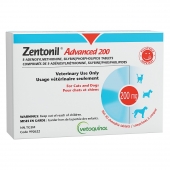While Lyme disease is well-known by name, many misconceptions persist about it. Here’s what dog owners should know regarding the infection, its symptoms and how to prevent it.
Lyme disease is transmitted by deer ticks
The disease is caused by a bacteria called Borrelia burgdorferi and transmitted to dogs and humans by deer ticks, or Ixodes scapularis. While deer ticks are usually small, adult specimens who have recently fed can become quite large, so never assume a dog is safe from Lyme disease based on the size of the tick attached to them.
The disease can’t be transmitted directly from dogs to humans. However, if a deer trick crawls off a dog and bites the owner or a nearby child, then infection is possible.
Infection can take place within 48 hours
A deer tick must remain attached to a dog for at least 48 hours before Lyme disease can be transmitted. Pets should be inspected daily, so that deer ticks can be removed as soon as they are found. Ticks typically attach themselves in places where blood vessels are close to the skin’s surface, like the ears, muzzle, neck, paws and between toes.
Lyme disease symptoms are different in dogs
In humans, Lyme disease can be diagnosed early by recognizing the distinctive, circular rash that usually appears between a week and a month after being bitten. In dogs, the symptoms are much more subtle, including joint pain, lethargy and fever, and may be easily misinterpreted by owners as a minor injury or fatigue.
Deer ticks are active year-round
Contrary to popular belief, deer ticks don’t die off during the cold season, but rather enter a dormant state. Whenever temperatures rise above 4°C for a few hours (which isn’t that rare in December or February) deer ticks start looking for food. This is why topical parasiticides should be applied year-round, and not only during warmer months.
Most tick control products don’t “repel” ticks
Parasite prevention products are designed to kill ticks after they bite, before the bacteria can be transmitted, and will protect the dog from Lyme disease. But since these products don’t actually prevent ticks from physically climbing onto the dog’s fur and biting them, pets should still be checked daily and any ticks that are found must be removed.
Deer ticks can be safely removed at home
Using the proper technique, deer ticks can usually be removed without requiring a visit to the veterinarian. Wear safety gloves and, using tweezers, grab the tick as close to the skin as possible. Pull straight out and avoid twisting or crushing the tick while doing so.
Not all dogs need treatment
The majority of dogs who test positive for Lyme disease never actually develop a clinical illness. Your pet’s veterinarian will determine if an antibiotic treatment is recommended, and recommend a follow up protocol.






